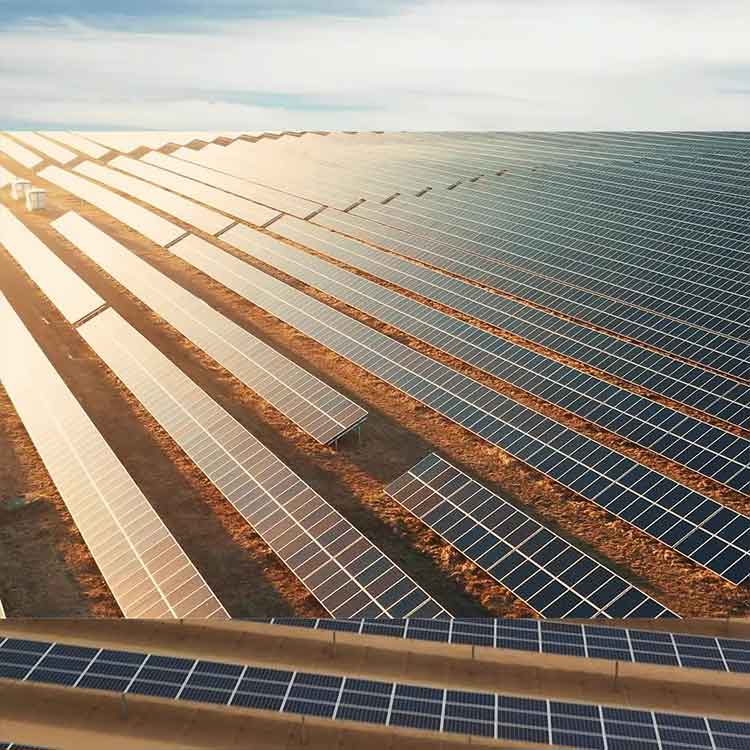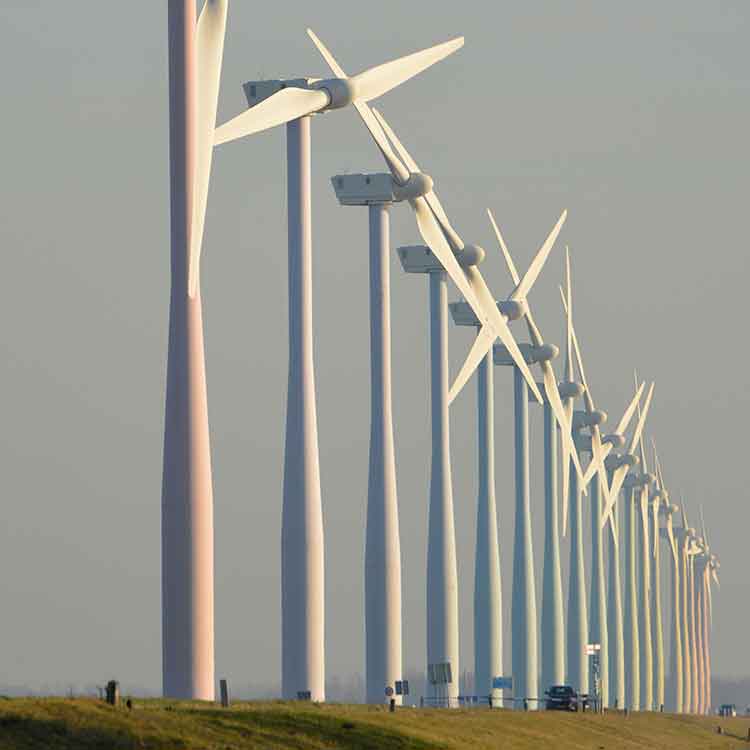مع استمرار تحول العالم نحو مصادر الطاقة المتجددة مثل الطاقة الشمسية وطاقة الرياح، يتزايد أيضًا الطلب على تركيبات الأسلاك الكهربائية الموثوقة والمتينة. أحد المكونات الأساسية لهذه التركيبات هو أنابيب PVC، والتي تُستخدم لحماية وتوجيه الأسلاك الكهربائية في مجموعة متنوعة من التطبيقات. توفر أنابيب PVC العديد من المزايا مقارنة بالمواد الأخرى، مما يجعلها خيارًا مثاليًا لمشاريع الطاقة المتجددة.
من أهم فوائد أنابيب PVC هي متانتها. PVC مادة قوية ومرنة يمكنها تحمل درجات الحرارة العالية والرطوبة والأشعة فوق البنفسجية. وهذا يجعل أنابيب PVC خيارًا مثاليًا للتركيبات الخارجية، حيث يمكنها حماية الأسلاك الكهربائية من العوامل البيئية وضمان الأداء الموثوق به بمرور الوقت.
تُعد مقاومة الأشعة فوق البنفسجية خاصية أخرى مهمة لأنابيب البولي فينيل كلوريد، مما يجعلها خيارًا مثاليًا للتركيبات الخارجية. يمكن للأشعة فوق البنفسجية المنبعثة من الشمس أن تتسبب في تدهور بعض المواد وهشاشتها بمرور الوقت، مما قد يؤثر على أدائها وموثوقيتها. ومع ذلك، فإن البولي فينيل كلوريد مقاوم بشكل طبيعي للأشعة فوق البنفسجية، مما يعني أنه يمكنه تحمل التعرض لأشعة الشمس لفترات طويلة دون تدهور أو فقدان خصائصه.
لضمان استيفاء أنابيب PVC للمعايير اللازمة لمقاومة الأشعة فوق البنفسجية، يمكن للمصنعين إجراء مجموعة متنوعة من الاختبارات على منتجاتهم. أحد الاختبارات الشائعة هو اختبار ASTM D2565-99، الذي يقيس قدرة المادة على مقاومة التدهور الناتج عن الأشعة فوق البنفسجية بمرور الوقت. في هذا الاختبار، يتم تعريض عينات أنابيب PVC للأشعة فوق البنفسجية لفترة زمنية محددة، ثم يتم تقييمها بحثًا عن تغييرات في خصائصها الفيزيائية، مثل قوة الشد والمرونة.
اختبار آخر يستخدم عادة لتقييم مقاومة أنابيب PVC للأشعة فوق البنفسجية هو اختبار ASTM G154، والذي يحاكي تأثيرات العوامل الجوية الخارجية على المواد. في هذا الاختبار، تتعرض عينات أنابيب PVC لمزيج من الأشعة فوق البنفسجية والرطوبة، مما قد يؤدي إلى تسريع تدهور بعض المواد. تعتبر أنابيب PVC التي تجتاز هذا الاختبار مقاومة ممتازة للأشعة فوق البنفسجية والعوامل البيئية الأخرى.
بالإضافة إلى متانتها ومقاومتها للأشعة فوق البنفسجية، فإن أنابيب PVC خفيفة الوزن وسهلة التركيب. يمكن قص أنابيب PVC وثنيها حسب الحاجة لتناسب العوائق أو تتبع محيط المبنى، مما يجعلها خيارًا متعدد الاستخدامات للتركيبات المعقدة. أنابيب PVC متوفرة أيضًا بمجموعة من الأحجام والألوان، مما يسمح للمقاولين والمُثبِّتين باختيار المنتج المناسب لتطبيقهم المحدد.
مع استمرار نمو الطلب على مشاريع الطاقة المتجددة، يتزايد أيضًا استخدام أنابيب PVC. على سبيل المثال، في تركيبات الطاقة الشمسية، تُستخدم أنابيب PVC لحماية الأسلاك التي تربط الألواح الشمسية بالعاكس، الذي يحول الطاقة المستمرة التي تولدها الألواح إلى طاقة مترددة يمكن استخدامها في المنازل والشركات. تُستخدم أنابيب PVC أيضًا لحماية الأسلاك في تركيبات توربينات الرياح، حيث يمكنها تحمل الظروف القاسية للبيئات المرتفعة.
بالإضافة إلى استخدامها في تركيبات الطاقة المتجددة، فإن أنابيب PVC مفيدة أيضًا في مجموعة متنوعة من التطبيقات الأخرى، مثل التركيبات الكهربائية التجارية والصناعية. يمكن استخدام أنابيب PVC لحماية الأسلاك في التركيبات تحت الأرض، حيث يمكنها مقاومة التآكل والعوامل البيئية الأخرى التي يمكن أن تلحق الضرر بأنواع أخرى من الأنابيب.
ومن المتوقع أن يستمر الطلب على مشاريع الطاقة المتجددة في النمو في السنوات القادمة. ووفقًا لتقرير صادر عن وكالة الطاقة الدولية، من المتوقع أن تساهم مصادر الطاقة المتجددة بنحو 901 طنًا و3 أطنان من الطاقة الكهربائية الجديدة المضافة على مستوى العالم بحلول عام 2025. ومن المرجح أن يؤدي هذا النمو في تركيبات الطاقة المتجددة إلى زيادة الطلب على أنابيب البولي فينيل كلوريد لحماية وتوجيه الأسلاك الكهربائية في هذه المشاريع.
فيما يلي بعض الصور لاستخدام أنابيب PVC في مشاريع الطاقة المتجددة:

تُستخدم أنابيب PVC عادةً في تركيبات الألواح الشمسية لحماية الأسلاك التي تربط الألواح بالعاكس. تُظهر هذه الصورة مشروعًا معينًا يتم فيه تركيب الألواح الشمسية باستخدام أنابيب PVC لتوجيه الأسلاك وحمايتها من العناصر.

يمكن تركيب توربينات الرياح في بيئات نائية عالية الارتفاع حيث يمكن أن تشكل الظروف الجوية القاسية والرياح القوية تهديدًا للأسلاك الكهربائية. تُستخدم أنابيب PVC في تركيبات توربينات الرياح لحماية الأسلاك وضمان الأداء الموثوق به بمرور الوقت. تُظهر هذه الصورة تركيب توربينات الرياح مع أنابيب PVC المستخدمة لحماية الأسلاك التي تربط التوربين بشبكة الطاقة.

في التركيبات الكهربائية التجارية والصناعية، تُستخدم أنابيب PVC عادةً لحماية الأسلاك في التركيبات تحت الأرض. تُظهر هذه الصورة مبنى تجاريًا به أنابيب PVC تحت الأرض تُستخدم لحماية الأسلاك التي تغذي أنظمة الإضاءة والكهرباء في المبنى.
بشكل عام، يعد استخدام أنابيب PVC في تركيبات الطاقة المتجددة عنصرًا أساسيًا في هذه المشاريع. توفر أنابيب PVC المتانة والمرونة وسهولة التركيب، مما يجعلها خيارًا مثاليًا لتركيبات الأسلاك الكهربائية المعقدة. إن مقاومة أنابيب PVC الطبيعية للأشعة فوق البنفسجية، جنبًا إلى جنب مع قدرتها على تحمل درجات الحرارة والرطوبة الشديدة، تجعلها حلاً موثوقًا به لحماية الأسلاك الكهربائية في التركيبات الخارجية. ومع استمرار نمو الطلب على مصادر الطاقة المتجددة، من المرجح أن يصبح استخدام أنابيب PVC أكثر أهمية في ضمان الأداء الموثوق لهذه التركيبات.



